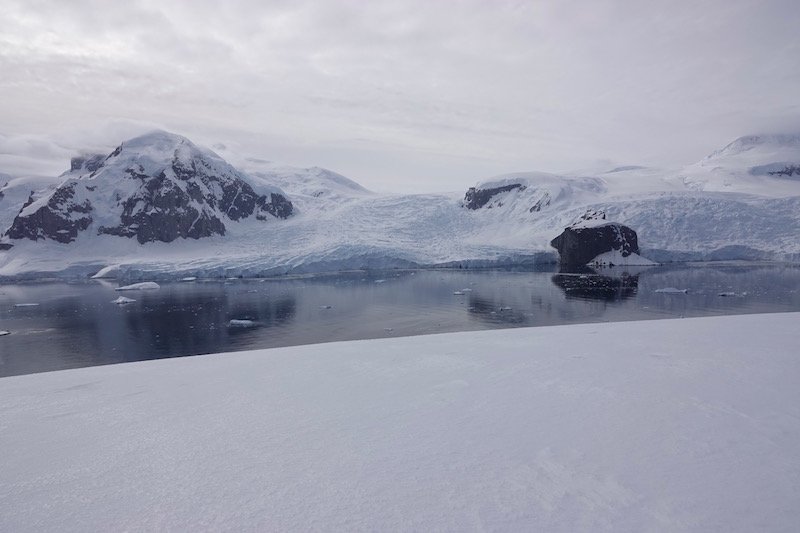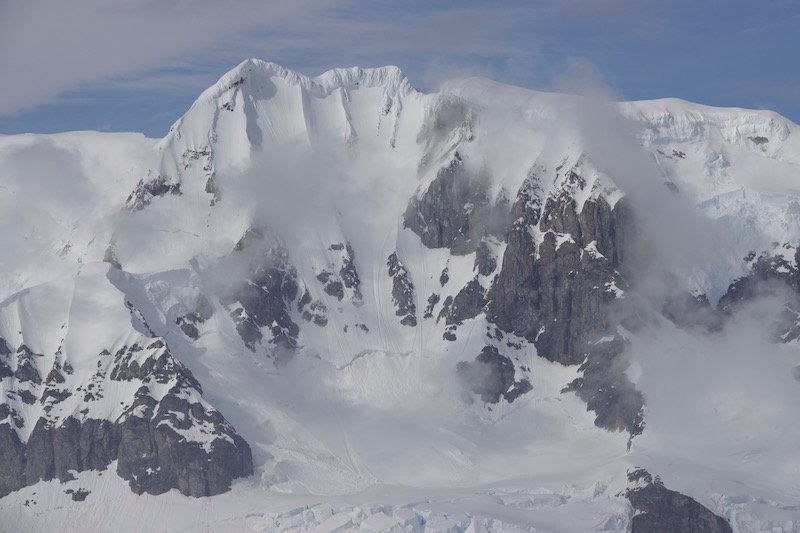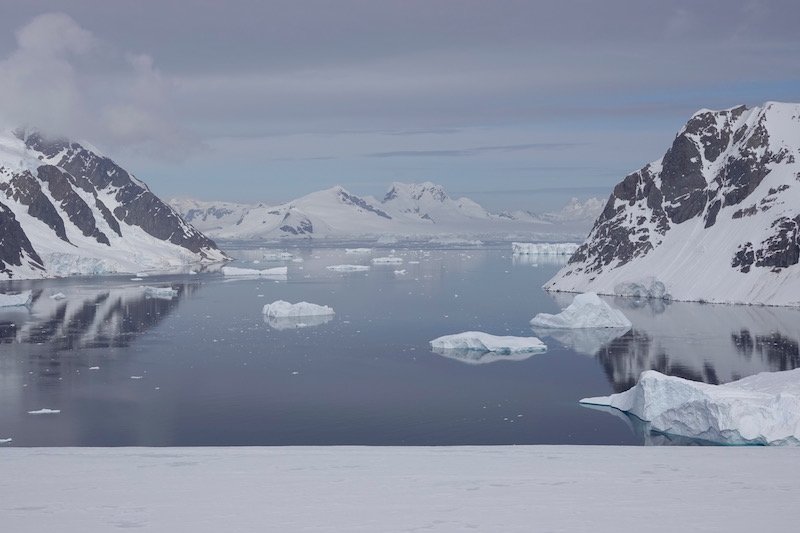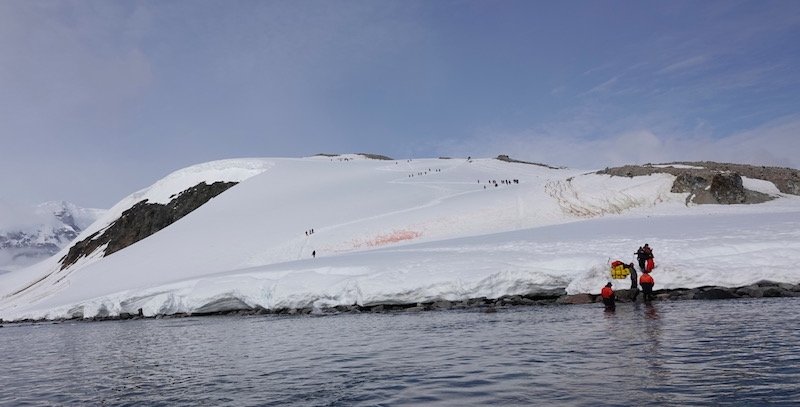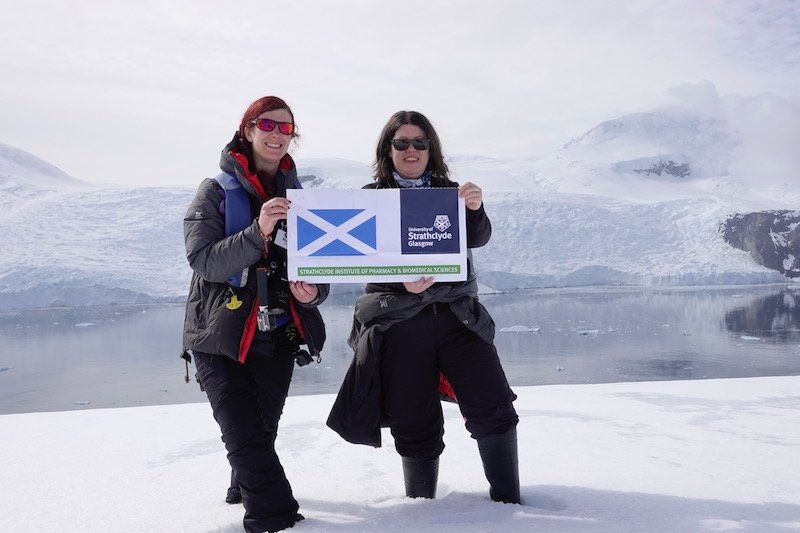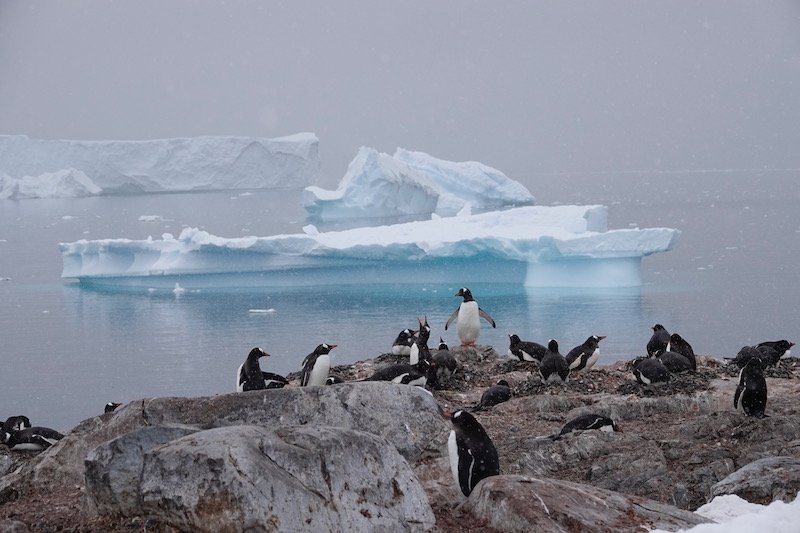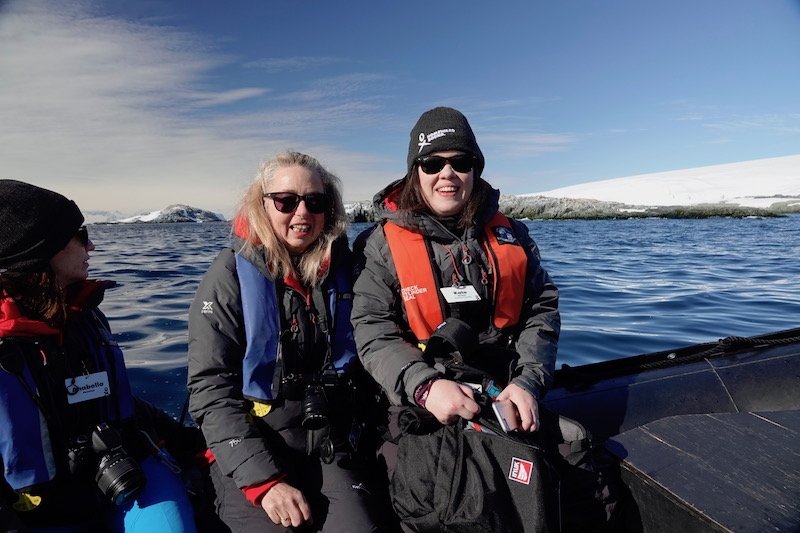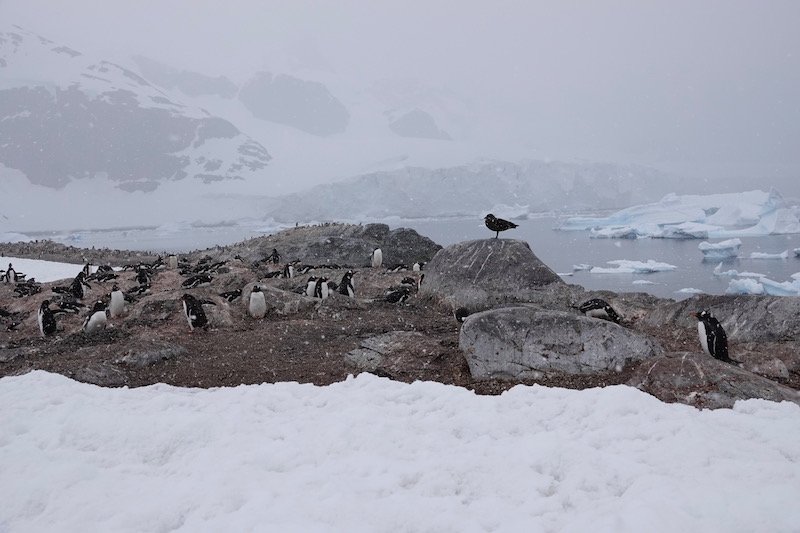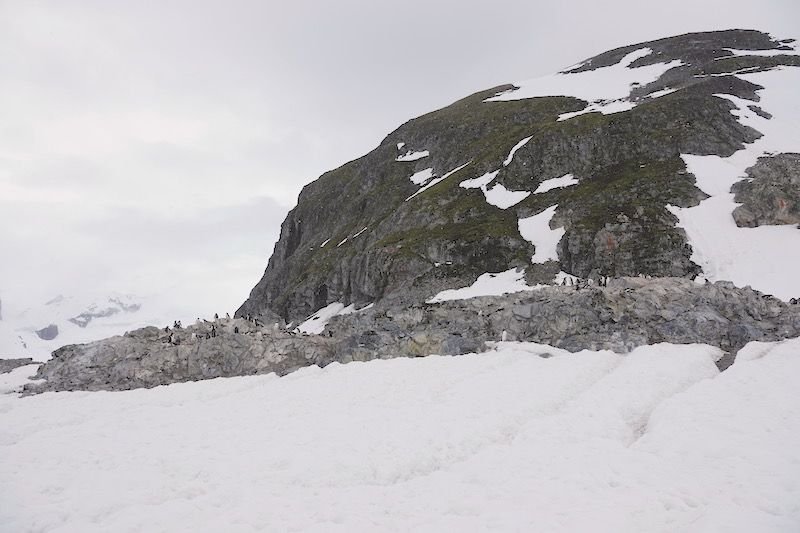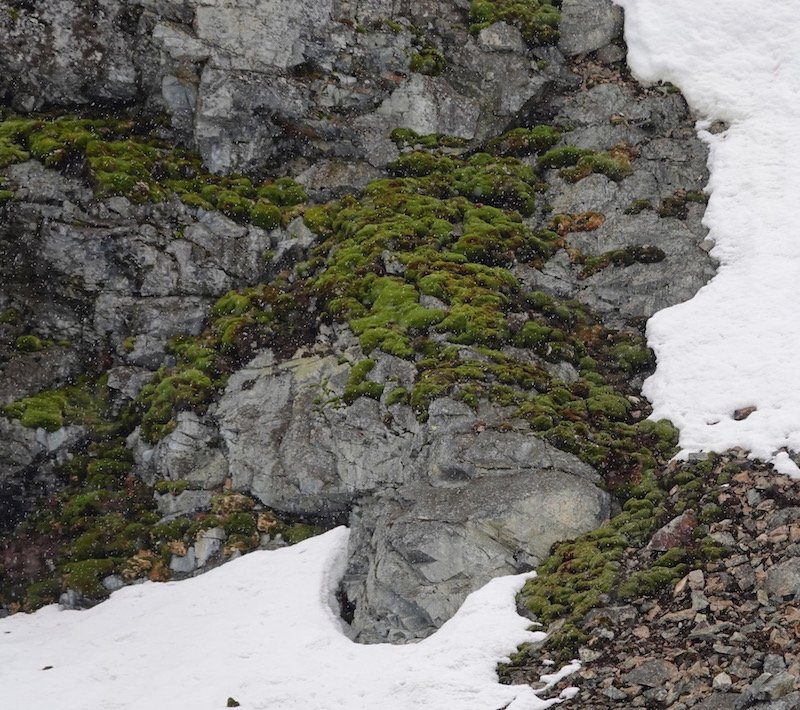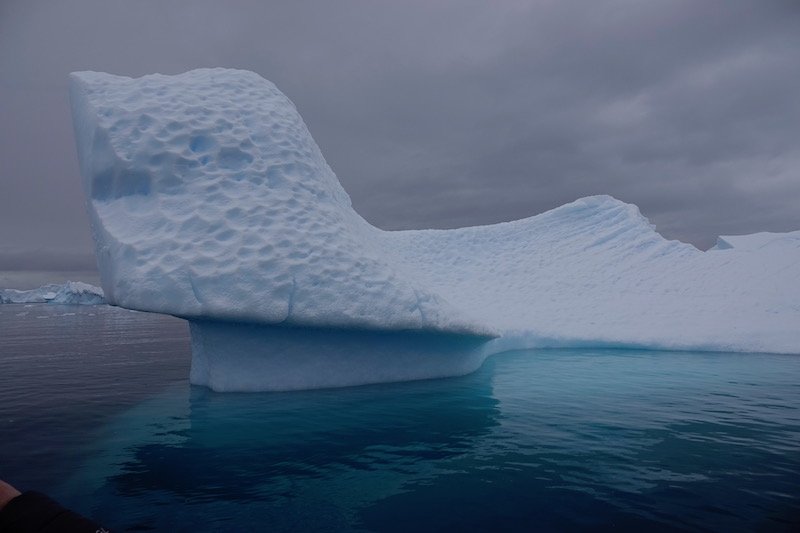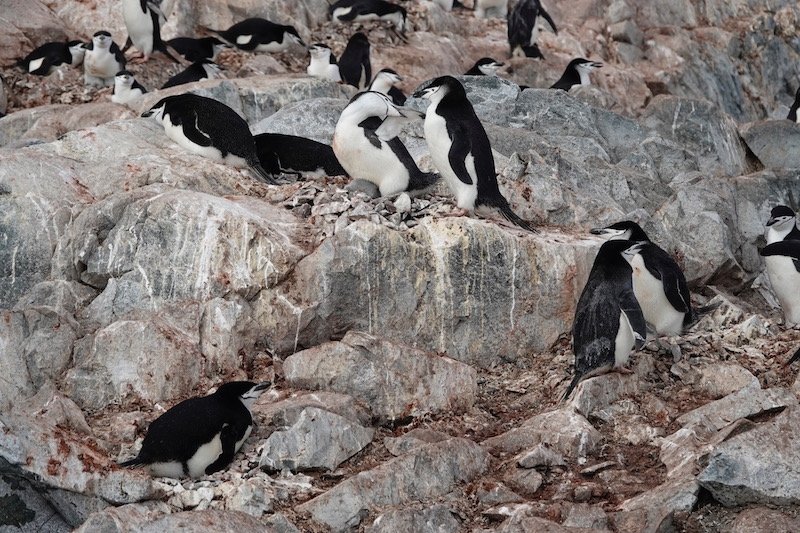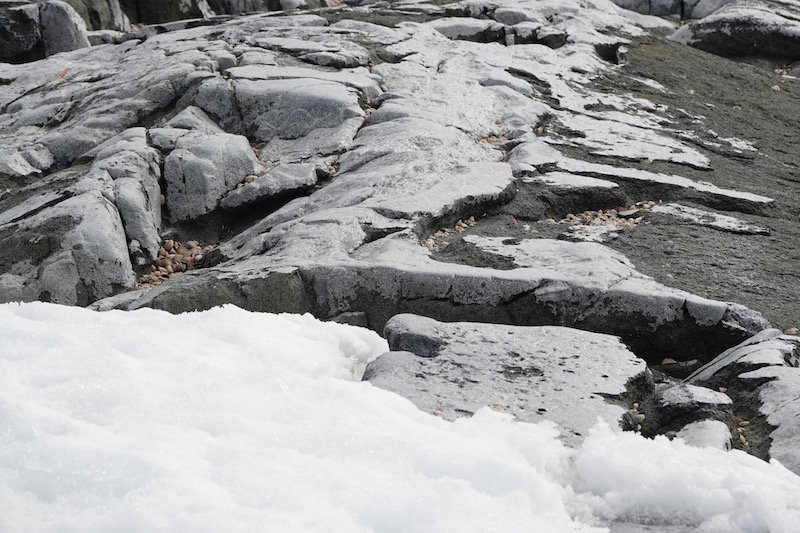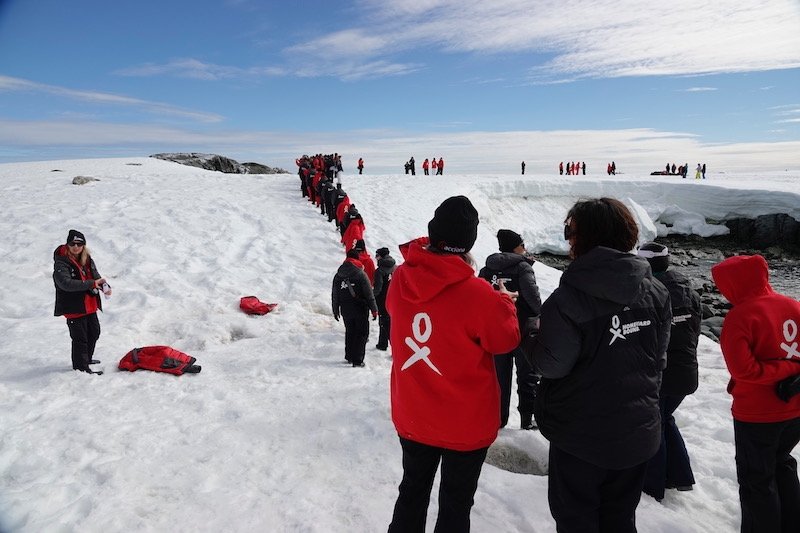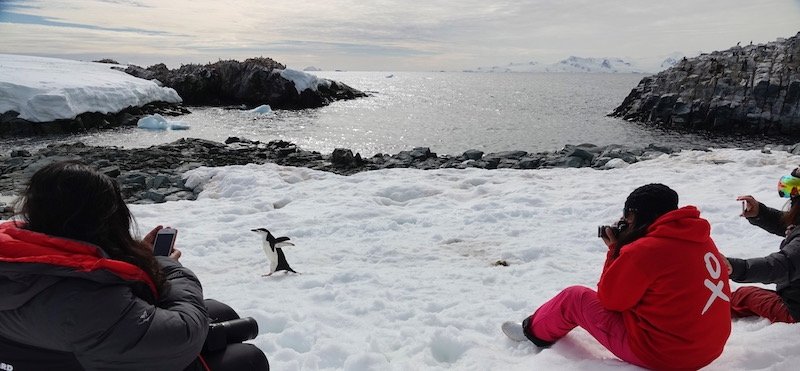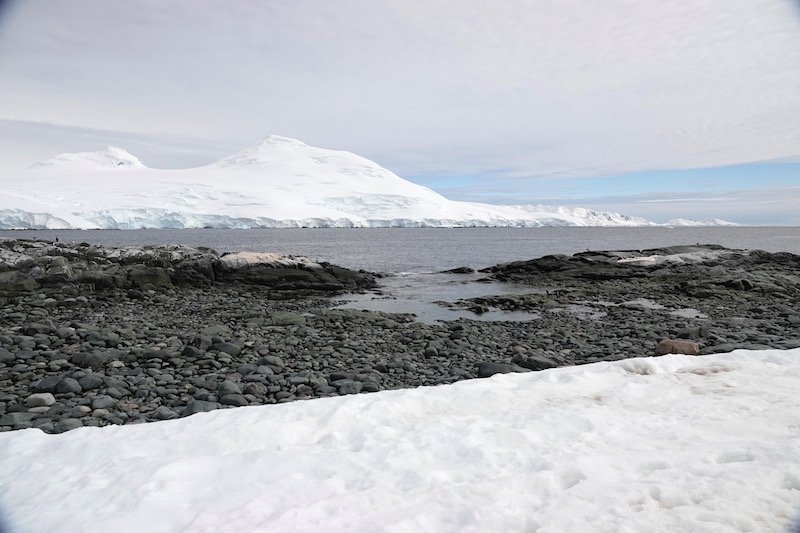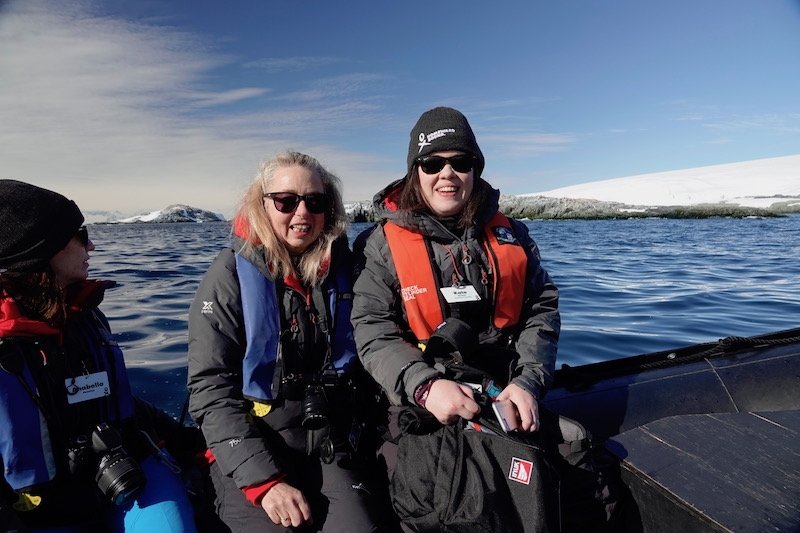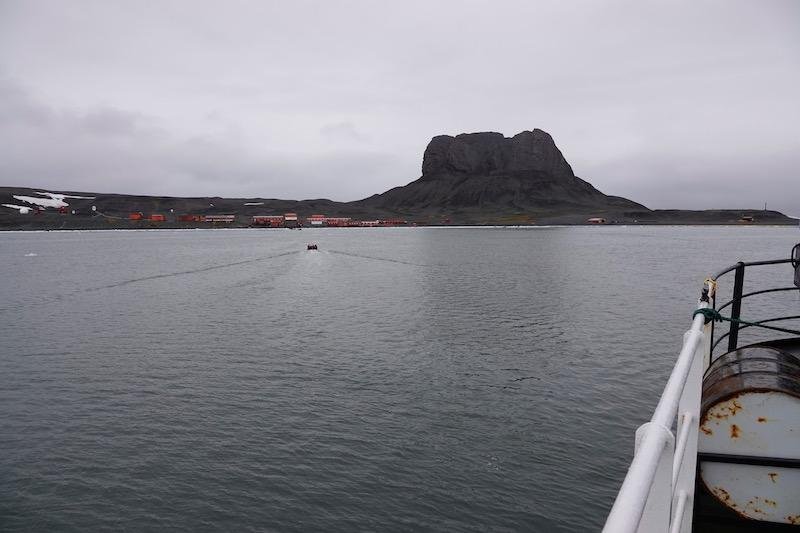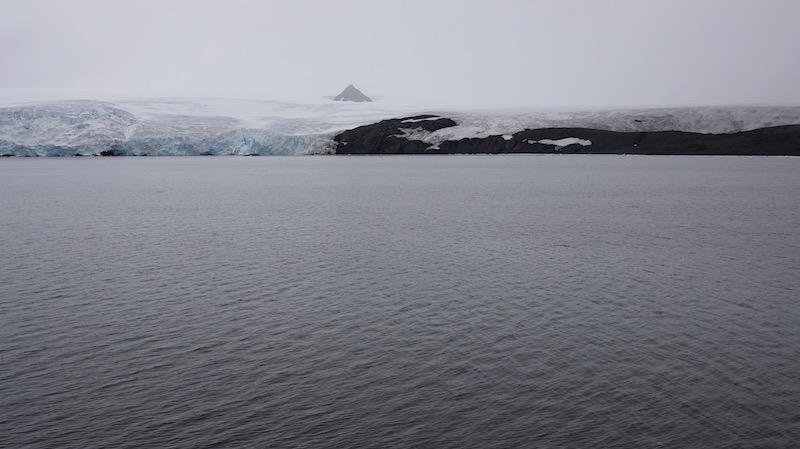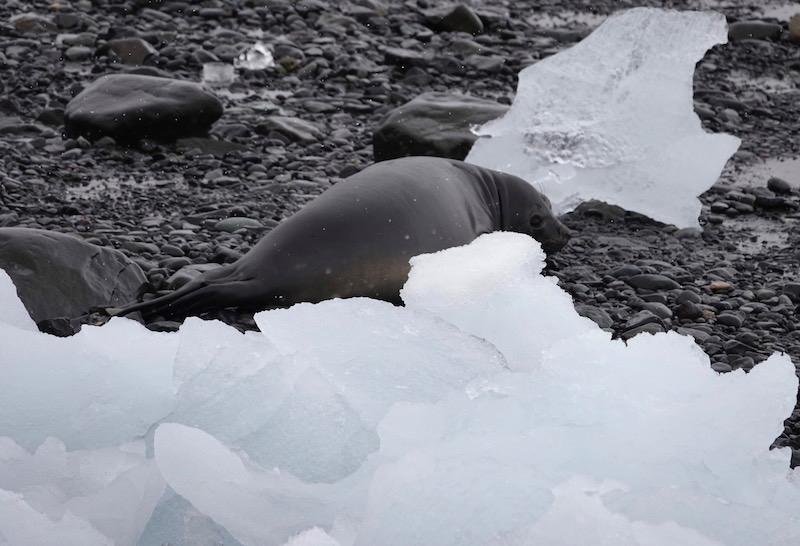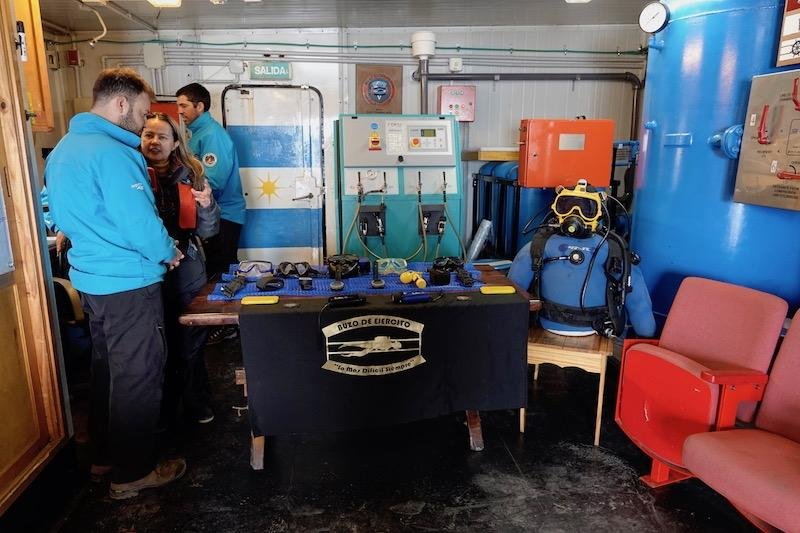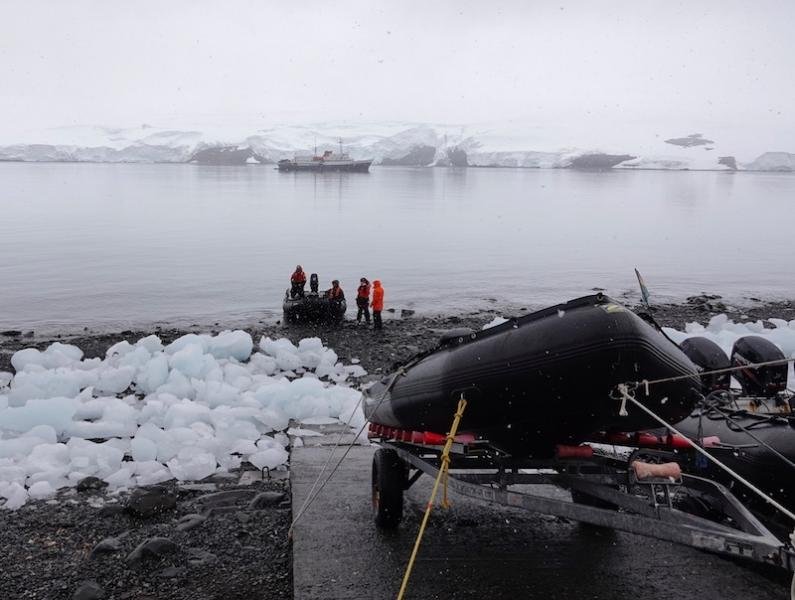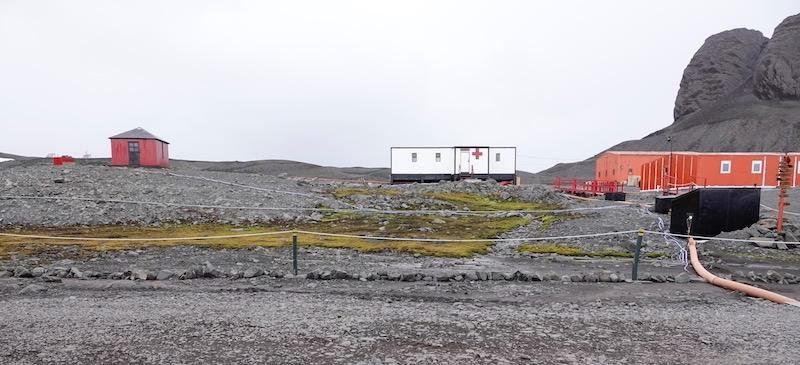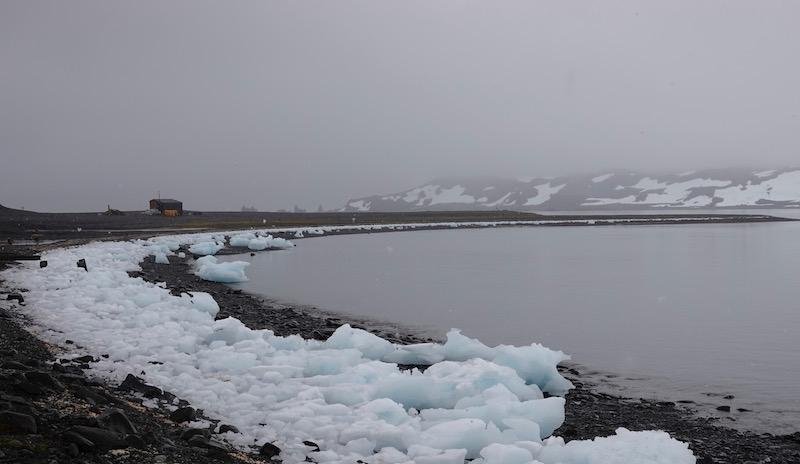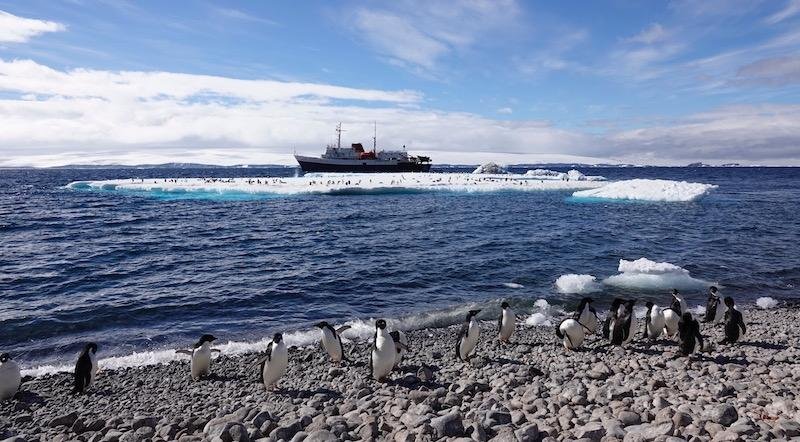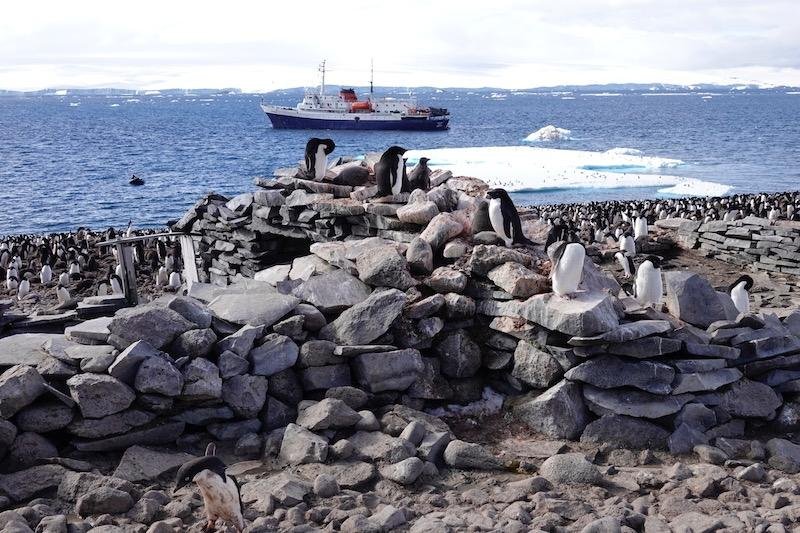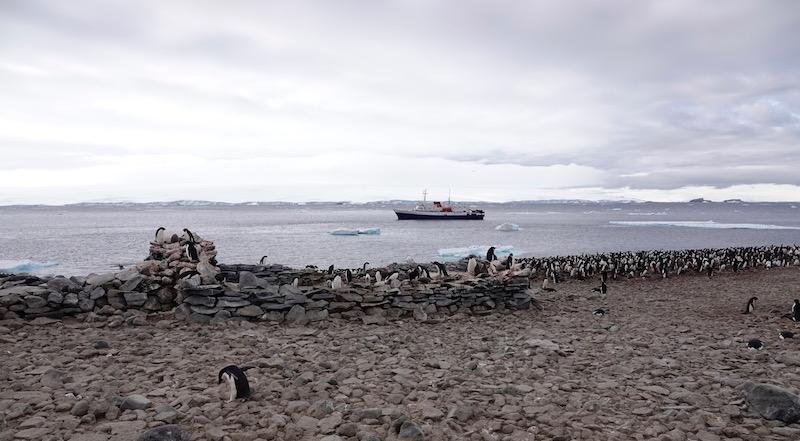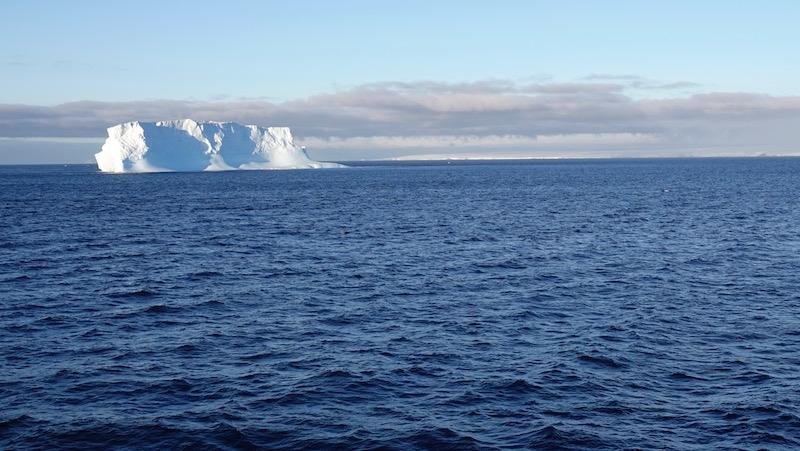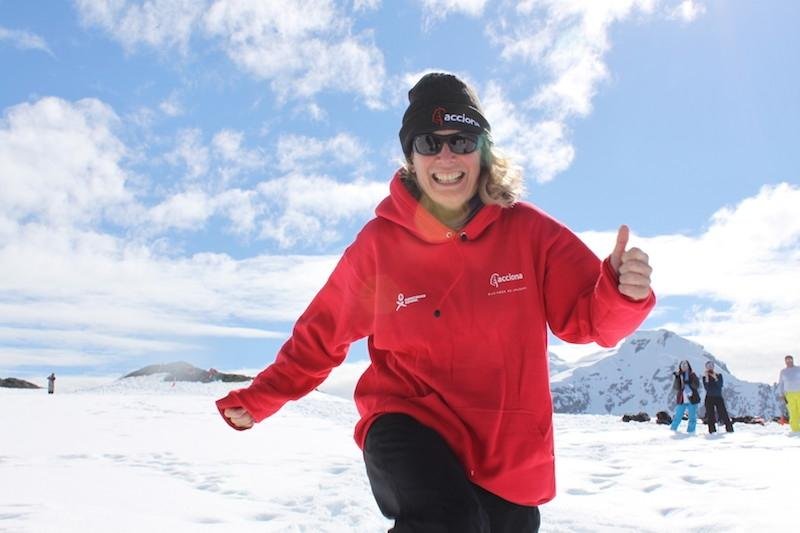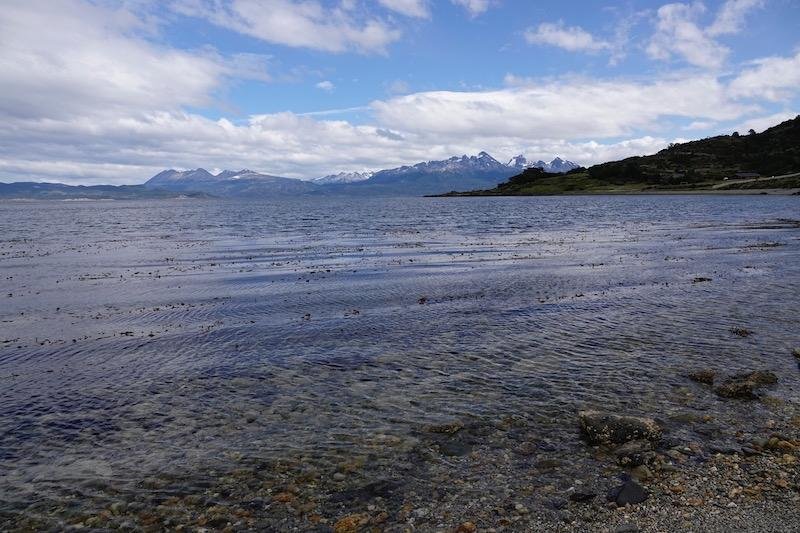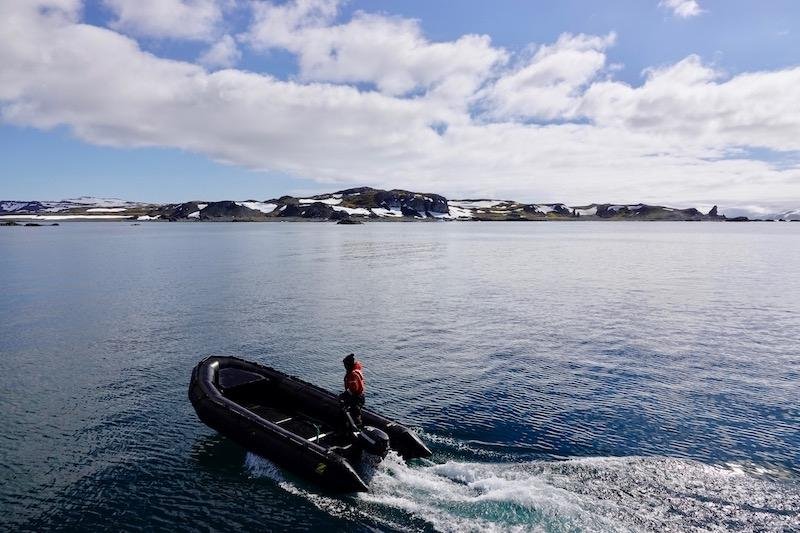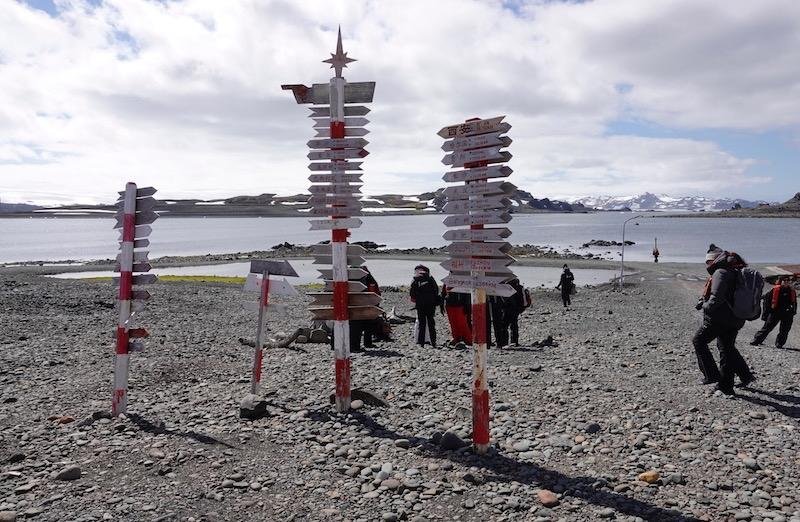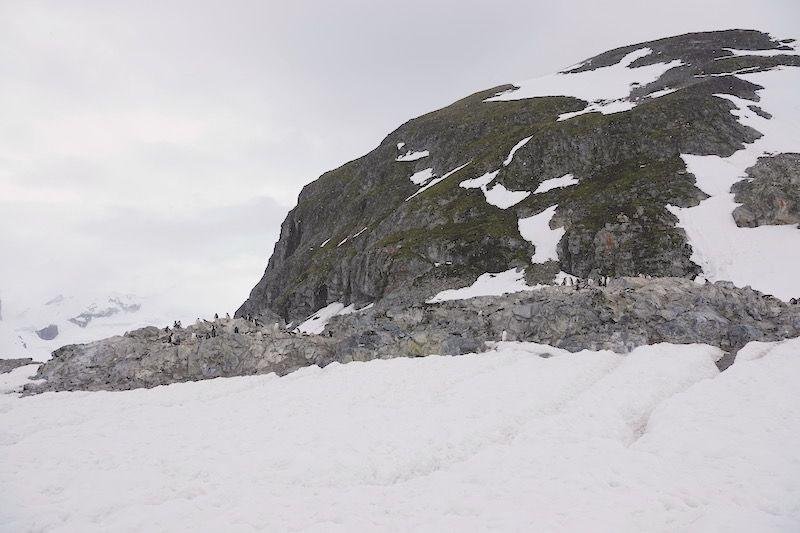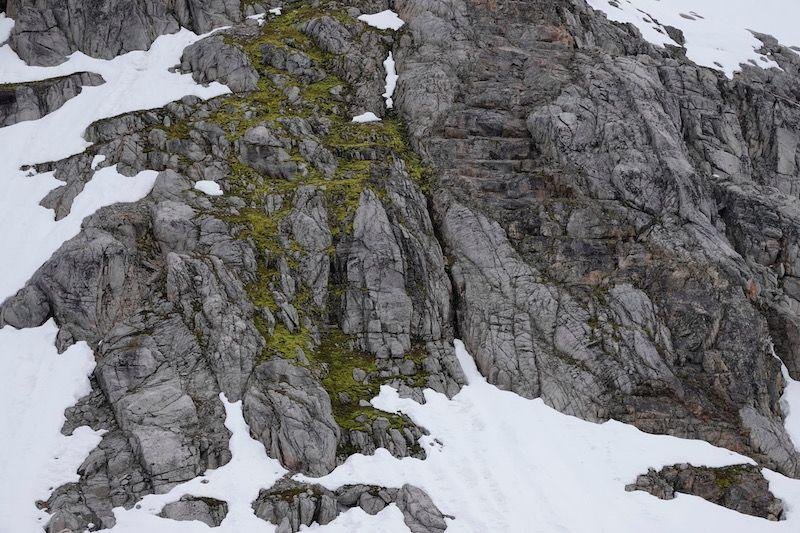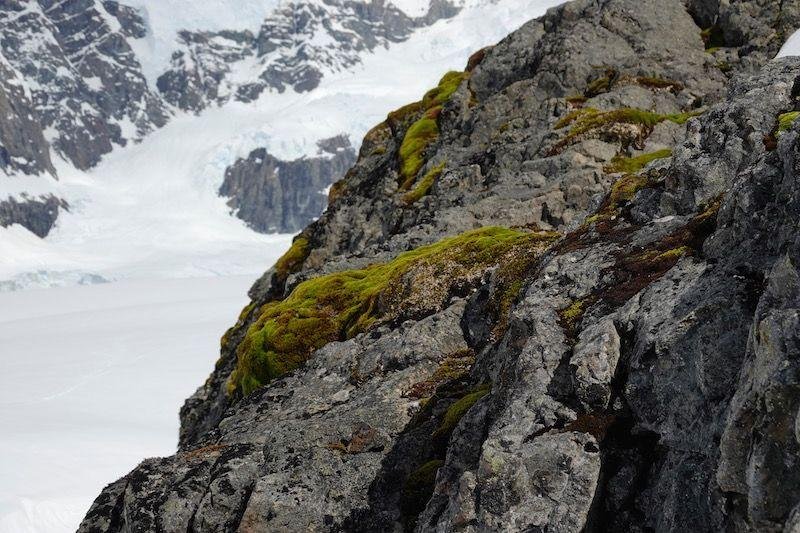Displaying items by tag: Homeward Bound
Homeward Bound 9 - Danko Island, snow algae and silence
We finally get ashore again on Jan 12th. Danko Island is near Cuverville Island where we landed a few days ago and saw Gentoos. It has a steep hill and a few small penguin rookeries. It’s great to walk up the hill where there is a large plateau and stunning views towards the peninsula. Inspired by Christiana Figueres many of us also have a magical silent time, listening to the whales breaching below and the avalanches and the calving glaciers cracking across the water.
On the way up the hill there is a big patch of red snow algae. Snow algae are singled celled algae similar to the ones that cause algal blooms in water. These ones swim in the water that coats the ice crystals within the snow banks. Like algal blooms in lakes and oceans the cells divide when conditions are good and swim off to new territory. They need enough sunlight for photosynthesis and to warm the snow, they also need nutrients which are in ample supply from penguin poo in the vicinity of penguin rookeries.
Snow algae are green algae like Chlamydomonas nivalis but can appear green or red depending on the amount of red carotenoids they produce to protect themselves from too much light (including ultraviolet UV-B). Drs Matt Daveyand Peter Fretwell are using satellites to track these snow algae blooms across Antarctica so if you spot any, take a photo, log the coordinates and send them a message!
It’s a great location for photographs and Rachel Bice is also from Cornwall, where I lived from age 6 to 19 and so we team up for a Kernow flag moment!
The Cornish flag is the flag of Saint Piran, the patron saint of tin-miners. I grew up in tin mining country and the moors where the mining had formerly occurred were great places to search for rose quartz, amethysts and other interesting rocks. Tin was the most important element in the economy of Cornwall but when the mines closed the Cornish took their mining skills all around the world.
Homeward Bound 5 - Cuverville Island
Each day the participants on the voyage spend 4-5 hours on the leadership program and we attempt to have a landing or a zodiac cruise if landings are not possible. I am leading the on board science program with Dr Katherine Duncan from the University of Strathclyde. Kate was a participant on the second voyage (HB2) back in March. We hadn’t met before this voyage but had talked on whats app and zoom calls whilst preparing the program along with the science faculty founders, Dr Justine Shaw (University of Queensland) and Dr Mary-Anne Lea (University of Tasmania). Kate is a wealth of knowledge about the HB program, the ship and what we need to bring with us. Luckily, both she and Dr Sophie Adams (our wellbeing guru and also a HB2 alumna) brought real coffee, an important component for wellbeing on the ship as elsewhere!
Having only met on the 28thDecember, Kate and I are now sharing a cabin, running a science theme together, enjoying our new-found friendship and planning future science grant applications. We also get to be on one of the first zodiacs ashore in order to supervise the landings and are often last back as we round up the stragglers who just want an extra minute ashore and, that last photograph or video.
The next landing is on Cuverville Island (7thJan) where we find Gentoo penguins nesting and skuas patrolling.
Cuverville Island is very snowy and the chicks were tiny, but at one end it has the most amazing wall of moss, a whole cliff face, green and grey against the white-grey sky. I would love to visit again and take moss samples for dating, to see how old these moss forests are.
We watched penguins rolling eggs or feeding chicks as well as well as mating. Presumably many of these Gentoo penguins have also had aborted attempts at rearing their first clutch of chicks this season.
I take the opportunity to segue from penguin sex to moss sex to the amusement of the nearby participants and Fern Hames (Arthur Rylah Institute)our on-board Sci-Comms facilitator.
On the way back to the ship we have a spectacular iceberg cruise, full of amazing blue, turquoise and white shapes against the grey of the sea.
Homeward Bound 4 - Hydruga Rocks
The Ushuaia then started sailing down the western side of the peninsula and the following day (6th Jan) we went ashore at Hydruga Rocks where we saw Chinstrap penguins nesting. There was lots of snow as we moved southwards down the peninsula and this is not good news for the nesting birds, since most of them want rocky surfaces to nest on. Frequent falls of snow during the summer mean that the penguins have trouble finding nesting sites and pebbles to build their nests and Monica thinks that many have already had failed attempts at nesting this season. Many are still sitting on eggs, possibly their second attempts this year and the chicks we see are very small.
There are also weddell and crabeater seals on the island as well as giant petrels, Antarctic sheathbills and cormorants. The kelp gulls have assembled a midden of limpit shells on the crest of the island near their nest sites.
The soft snow also makes for interesting travelling for us. Many of the participants are new to walking in snow and it proves especially challenging when we attempt to assemble everyone into a heart shape for some Homeward Bound publicity shots. Penguins even come up to see what we are are doing.
That night we moor in the peaceful and stunningly beautiful Wilhelmina Bay and enjoy the frolicking of lots of humpback whales.
Homeward Bound 3 visits Carlini Base
Saturday (5thJan) we are back on King George Island, at the Argentinian Carlini Base. Carlini is the only station in Potter Cove and is named after a scientist Alejandro Ricardo Carlini. The station sits beneath the impressive Tres Hermanos mountain and the nearby glaciers are retreating rapidly exposing new rocky areas.
The weather is overcast, cloudy with wet snow. Young elephant seals haul out amongst the chunks of glacial ice that are washed up along the beach.
We tour the Science labs, the Dive sheds and also are given refreshments in the station mess. There is a compression chamber in the Dive facility and a technician to operate it in case the divers run into problems.
The scientists on station came from many countries and tell us about the current science research programs that are running on and around the station including a lot of marine biology and hydrology. It is great to see another base in action and to hear first-hand from the scientists about their research. It is also wonderful that so many people on station are prepared to give up their Saturday to entertain visitors.
The projects include remediation projects aimed at understanding how plants and microbes can clean up contaminated soil around Antarctic stations. Many sites in Antarctica are contaminated with oil and other chemicals as a result of historic waste practices and some of my students have investigated how tolerant Antarctic mosses and alga are to oil and if Macquarie Island plants can help promote soil clean ups.
I was particularly excited to see so much moss and lichen around Carlini, as well as the two vascular plants that grow on the peninsula region of Antarctica, the grass Deschampsia antarctica and the pearlwort, Colobanthus quitensis. The lichens and mosses have even started to colonise the whale bones that remain from historic whaling in the region.
Homeward Bound 3 - Paulet Island
After Great Wall Station we get back on the ship and head off through the Antarctic Sound on the Eastern side of the peninsula. Lots of spectacular tabular icebergs and humpback whales breaching, showing off their tails, and flipper slapping make for a glorious evening’s sailing.
Paulet Island is our next landing spot (4thJan). This island is home to a massive Adelie penguin rookery (100,000 breeding pairs) as well as skuas, kelp gulls, Antarctic sheathbills and cormorants.
The Adelie’s have fluffy brown chicks and so the challenge was to walk along the beach keeping enough distance from the penguins and other nesting birds to reduce our impact. While the younger Adelie penguins were quite curious about us, the nesting birds are understandably wary of visitors especially with so many predatory skuas on the hunt for food. Paulet island also has the remains of a hut built last century by shipwrecked sailors from the Nordenskiöld ship the Antarctic. Today the hut walls are high-rise nesting sites for Adelie penguins.
There is also a massive lake in the middle of the island which is green with algal blooms from all the penguin guano. Even in the cold, the smell from such a large colony is pretty overwhelming.
Despite there being so many Adelie penguins on Paulet, this species is one of the losers from climate change. Adelie penguins are reliant on sea ice and cooler water to provide food and so are losing out to the more generalist feeders, chinstrap and Gentoo penguins, which are expanding southwards especially on the western side of the Antarctic peninsula.
The Ushuaia crew are Argentinian and Chilean. Our female voyage leader Monica Schillat, is an historian and has many tales to tell of her years of working on Antarctic vessels. Kata, one of the expedition guides, has just finished her PhD researching orcas which means we have lots of expertise to draw on. Leandro and Juan like plants too so I am in good company. Because the weather is so calm we get to take many iceberg cruises and see lots of humpback whales and orcas. One night I am sure I can hear the humpbacks calling and in the zodiac boats we get close enough to smell their fish-oily breath. We often see weddell and crabeater seals hauled out on ice flows or swimming along beaches.
Homeward Bound - A leadership voyage of Discovery
Sharon has just returned from 19 days aboard the MV Ushuaiaas part of the Homeward Bound HB3 voyage. Homeward Bound is a ground-breaking leadership initiative, set against the backdrop of Antarctica, which aims to heighten the influence and impact of women in making decisions that shape our planet.
I was invited to join the Homeward Bound Leadership Faculty for the third voyage (HB3) which departed Ushuaia in Argentina on 31st Dec 2018. My role was to deliver the On-Board Science Stream content with Dr Katherine Duncan (University of Strathclyde). In 2019 we were extremely lucky to have the inspiring and stubbornly optimistic Christiana Figueras join the Leadership Faculty. This is my blog.
Days 1-6
We left on New Year’s Eve 2018, after two days of travelling and then three days of on shore program delivered in Ushuaia. By the time we found our cabins and unpacked, securing all our belongings to ensure they survived the Drake Passage, we were ready for a good rest. So many of us spent a lot of the Drake crossing catching up on sleep.
We arrived in the South Shetland islands on the 3rd Jan 2019.
Our first visit ashore was to King George Island which is home to many Antarctic stations. I have visited this island twice before with colleagues, Dr Angelica Casanova-Katny (University of Temuco) and Professor Gustavo Zuniga (USACH), staying at the Chilean Summer Scientific Station, Escudero. I am excited to see Ardley Island from the ship as we sail by. This Antarctic Specially Protected Area, has some of the best lichens I have ever seen, but I am surprised to see there is very little snow on the island. However, this is good news for Dr Melinda Waterman who will be arriving at Escudero in the next few days. Less snow means it will be easier for her to make the measurements of moss microclimate that we need.
Meanwhile, the HB3 team visit the Chinese Great Wall Station where were saw the museum which shows what life was like for Antarctic expeditioners in the 1980s and walked around the station. While visits to stations by tourist ships are limited, interstation visits for researchers are quite common. In 2015, whilst at Escudero, I was lucky enough to be invited to Sunday afternoon tea at Great Wall Station and we saw the new Science Laboratory and station library.
More unusually, in 2013, Angelica and I attended the Metallica concert at Carlini Base. Not the sort of thing you expect to be invited to whilst researching mosses in Antarctica! King George Island was the furthest south I had been on this side of Antarctica so all the other locations were new experiences for me.
Witnessing changes in Antarctica’s ancient forests
Professor Sharon Robinson has just returned from 19 days aboard the MV Ushuaia as part of the Homeward Bound Leadership Faculty 2019. She led the On Board Science Stream leader with Dr Katherine Duncan.
Antarctica seems like a long way from anywhere but climate change is affecting the tiny plants and animals that make their home there. Along the Antarctic Peninsula region, that Homeward Bound 3 is visiting, the climate is becoming much warmer and wetter which means that plants can colonise new ice-free areas and grow faster.

On the other side of the continent it is getting colder and drier and the plants are having a tougher time. My team have shown that some East Antarctic moss beds are drying out and dying.2-4So from pole to pole, and all around Antarctica, these tiny plants are recording how we are changing our planet as they grow. My team’s work shows that although these plants are tiny (a few centimeters tall), they can be hundreds of years old. They are the old growth forests of Antarctica, home to tiny microscopic animals, like water bears or moss piglets (tardigrades) springtails and nematode worms, as well as fungi and microbes. We know the plants are hundreds of years oldbecause as they grow, they lay down a signal of the carbon dioxide in the air and so record changes in the composition of carbon dioxide. From coal burning to radioactivity released from nuclear testing in the 1950s and 1960s (the bomb pulse) they are recording the Anthropocene from the bottom of the globe. That means they are sentinels for our past, as well as early warning of possible global futures.
These plants survive freezing winters, emerging from under winter snow for a brief summer of weeks to just a few months. They get their water from ice melt and their nutrients from ancient deposits of penguin poo, as well as more recent bird droppings.
They grow all around the Antarctic coast, and it is exciting to think that we may be the first people to see some of these plants as they take over newly exposed land on the peninsula.
On 13thJanuary, we saw a lot of moss growing near the Admirante Brown (Argentinian) Station. Based on their past visits, our guides on the Ushuaia were able to show us how fast the ice is retreating behind the station and we can see the moss that is colonising these newly exposed rocks. We saw many species of bright green moss on this one landing.
The day was so warm, we could see tiny animals, small as a pin head, running around. These invertebrates live in the tiny moss forests and on warm days roam around the nearby rocks looking for food. I was excited to see my first Antarctic midge (Belgica antarctica), the wingless fly that is found on the Peninsula.
But there is also a sobering message of climate change in action. Seeing first hand, how quickly the glaciers are retreating and the area is changing, makes the Homeward Bound goal of building a sustainable global future even more important.
References
- Waterman M, Turnbull J and Robinson, S (2018) Antarctica’s ‘moss forests’ are drying and dying https://theconversation.com/antarcticas-moss-forests-are-drying-and-dying-103751
- Sharon Robinson, Melinda Waterman & Andrew Netherwood (2017) East Antarctic mosses reveal a windier, drier climate https://youtu.be/LF4p3ng0HRQ
- Robinson SA, King D, Bramley-Alves J, Waterman MJ, Ashcroft MB, Wasley J,Turnbull JD,Miller RE,Ryan-Colton E, Benny T,Mullany K,Clarke, LJ, Barry, L, HuaQ. (2018) Rapid change in East Antarctic terrestrial vegetation in response to regional drying.Nature Climate Change 8, 879-884, DOI: 10.1038/s41558-018-0280-0

